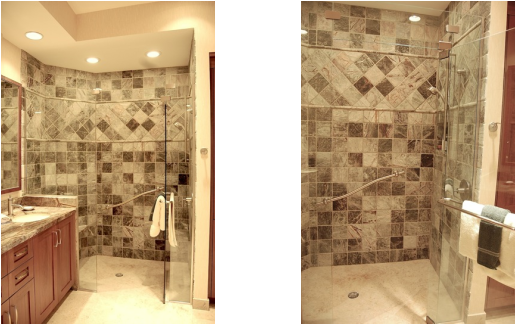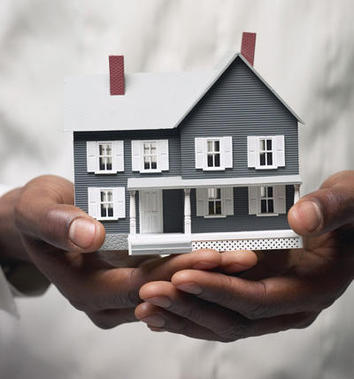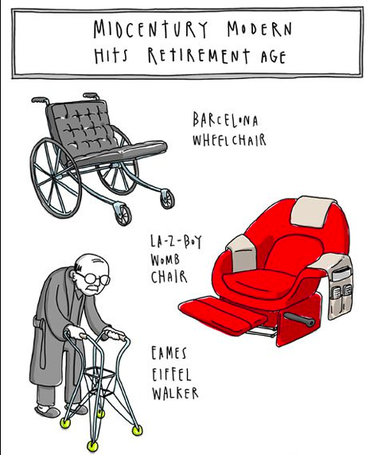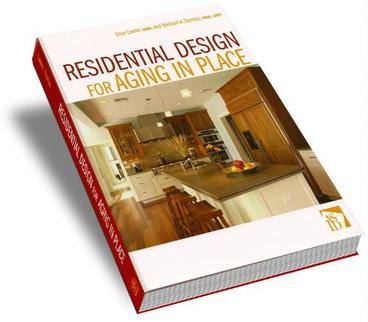
After the review, an existing but somewhat irascible client requested an appointment. In the meeting, he let me know that at the age of 78 and after decades of tennis and golf, he was to have hip and knee replacement surgeries. He would then require 8 weeks in an assisted living center.
He loudly objected to the thought of being in his words, “locked up with a bunch of old people.” He asked if there was a way to remodel his bathroom to cut short his rehab and be home sooner than later. He firmly instructed me to “use your ten essentials checklist and design me a bath I’ll be proud to come home to.”
In meetings that followed, we had conversations about bathing and grooming habits. Discussions included how he would first use a wheelchair and then a walker. The need to sit at a vanity would be important. I provided options for a taller toilet to help reduce the strain on his knees and hips when getting off the toilet seat. And we talked about a curb-less shower, one with a bench, a handheld shower and the requisite grab bar.
Things were moving along great until the words “grab bar” were mentioned. He quickly stood and demanded why I would even consider such an element. I was not surprised since he could be cantankerous. I tried to explain that the shower was the most dangerous place in his home and should he fall, a grab bar was important for his safety. But it was clear he would not have it.
“After rehab is over, I don’t want to be reminded every day that I was once a cripple.” The conversation about grab bars was dropped. I reminded myself to lose the battle but win the war. What was needed was a different approach.
Shortly prior to his surgery, I offered a new solution. No longer would he need a grab bar. What he required was a “balance bar,” something a ballet artist would use. He was intrigued. I showed him the picture and described it as a seductive, sexy polished chrome support. Of course, it was a “grab bar” but one with a high style and greater aesthetic. Need I say, he approved of it.
I think fondly of this elder client and the lessons learned about working with individuals who face temporary or permanent physical challenges. For me, there were two lessons in this client exchange.
• Firstly, people do not want to be visually reminded of the challenges of the aging process. The careful specification of high style products can help reduce this perception
• But secondly and most importantly, the choice of alternate words and certain key phrases will help clients achieve acceptance of your design intent and avoid objections. Stop using the words "grab bars" as they cause some to think about places they would rather avoid.
So be savvy. Constantly demonstrate the value of design as a solution when creating for a lifetime of independency. After all, design isn’t just about the quality of the environment. It’s about the quality of life.
If you’d like a copy of my Ten Essentials For Aging In Place, CLICK HERE









 RSS Feed
RSS Feed
